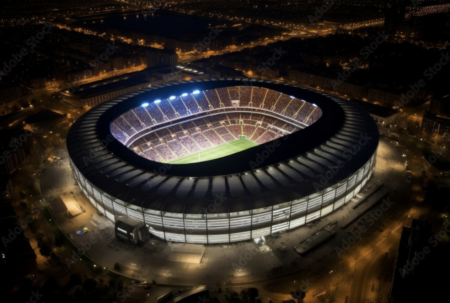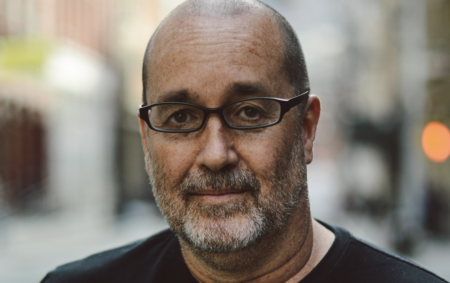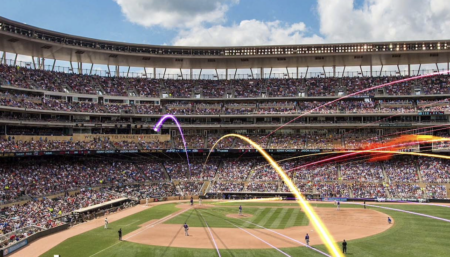Last week English Premier League soccer side Tottenham Hotspur FC released further details of its new, 61,000-seat stadium.
The new venue, which will host NFL games and entertainment events in addition to serving as the new home of the soccer team, also features a staggering array of hospitality options, and has been designed to combine cutting-edge technology with the heritage of the prestigious club.
Stadia spoke with Chris Lee, of project architects Populous, and visited the site of the under-construction stadium.
How hard is to design a stadium for an organization such as Tottenham Hotspur and retain the essence of the club’s heritage?
It was certainly one of the key drivers for us for the design – to try and work out what the essence of [current stadium] White Hart Lane is. It’s such a great stadium with such a long history and great atmosphere. So we spent a lot of time with Daniel [Levy] and the rest of the team from Tottenham, trying to distill what it is that we thought made White Hart Lane special, and in broader terms, what it is that we all liked about the traditional English soccer stadium.
In essence, what we love about the Lane, or [Chelsea FC stadium] Stamford Bridge, or other stadia, is that they have such amazing atmospheres, first and foremost. We believe that there are a couple of key ingredients to creating an incredible atmosphere – proximity is one of those, and that was a real focus from Daniel, getting everyone as close to the pitch as possible. We spend a lot of time working through dozens and dozens of sections for the building, to get everybody as close to the action as possible – getting the bowl set out so that it’s all about proximity.
Further to that, there are a couple of key features that we believe contribute to great atmosphere. Noise is certainly a key part of that, so we spent a lot of time with the acousticians, Vanguardia, who tend to do a lot more – they are U2’s sound engineers – in the arena and theater industry. We approached the design of the seating bowl – the bowl, the roof, everything within the arena itself – a little bit more like you would a concert hall, looking at reverberation times, areas that needed more reverberant materials, areas that needed dampening. And that was all about creating great acoustics, and I think the key there was acoustics that were clean and crisp, and so what we find via our research was that if you achieve that, songs last longer and don’t tend to break up. You notice at a lot of grounds that, once the chanting and singing starts, once everyone gets out of sync because of the reverberation times, the songs tend to end. We wanted to create an atmosphere within the bowl where songs would last longer.
The other key piece of that was our big south stand – having a 17,000-seat single tier which is incredibly steep and incredibly close. We actually had a section where it was almost 4m from the goal line, which was actually too close, so we had to shuffle it back a bit, so it’s now 5m from the goal line. You get this huge wall of sounds, which is what we see as the engine that drives the atmosphere in the seating bowl.
Was there consultation with fans to avoid the kind of disgruntled supporters seen during the recent relocation of other London clubs?
The great thing about Spurs is that they have fantastically committed supporters groups, all of which were consulted with – they discussed what they like, what was important to them, and the club are, I think, fantastic in dealing with their customers and the customer experience. So there was a lot consultation with supporters’ groups, and a lot of consultation with the local community about how the building sat, what they wanted from the environment – how we could make Tottenham better via the stadium and its ancillary developments.
How did having to work on a site that remained in use – the old stadium continues to operate while construction of the new venue is underway – affect the design?
It certainly had an impact on the construction and the sequencing of that, and I guess, to a certain extent, it has influenced the design as far as getting some clean phases in what could be built during phase one – what you can see today – and the phase in which we take down White Hart Lane. So there is shuffling, for example where we have taken down the northeast corner of the old stadium. So it has had an influence, but it didn’t influence it in a way that was detrimental, but from a construction perspective, it has had an impact.
How important was it that the stadium wasn’t just a self-contained structure that sits within an area of London that has grown up around something different?
I think that was almost the first and foremost driver. Daniel has a fantastic vision – some of the wards around the stadium are among the most deprived in the UK, and, I believe, something like 70% of residents in the Northumberland Park ward receive some kind of social benefit. It was the scene of two riots, and Daniel has a vision of how to regenerate Tottenham.
Creating a building that we think of as a civic building was absolutely key. It is, I think I’m right, the only EPL stadium that is on a high street, which changes the tone. It has to be a civic building, almost a public building. Tottenham fans love their club, they invest emotionally in the club, so having a stadium that was integrated into the local environment was super important – and not just the stadium, but the ancillary developments as well, so the southern plaza really will be the biggest public realm space in Tottenham. We want it to become the literal heart of Tottenham.
January 25, 2017




